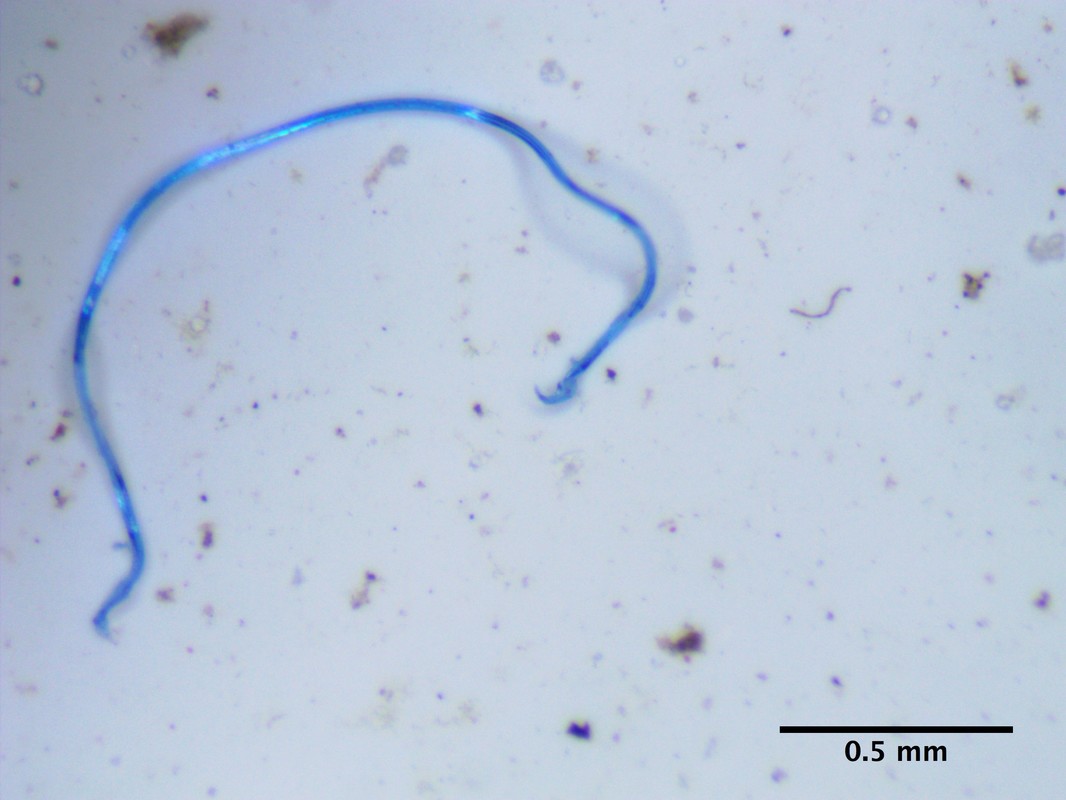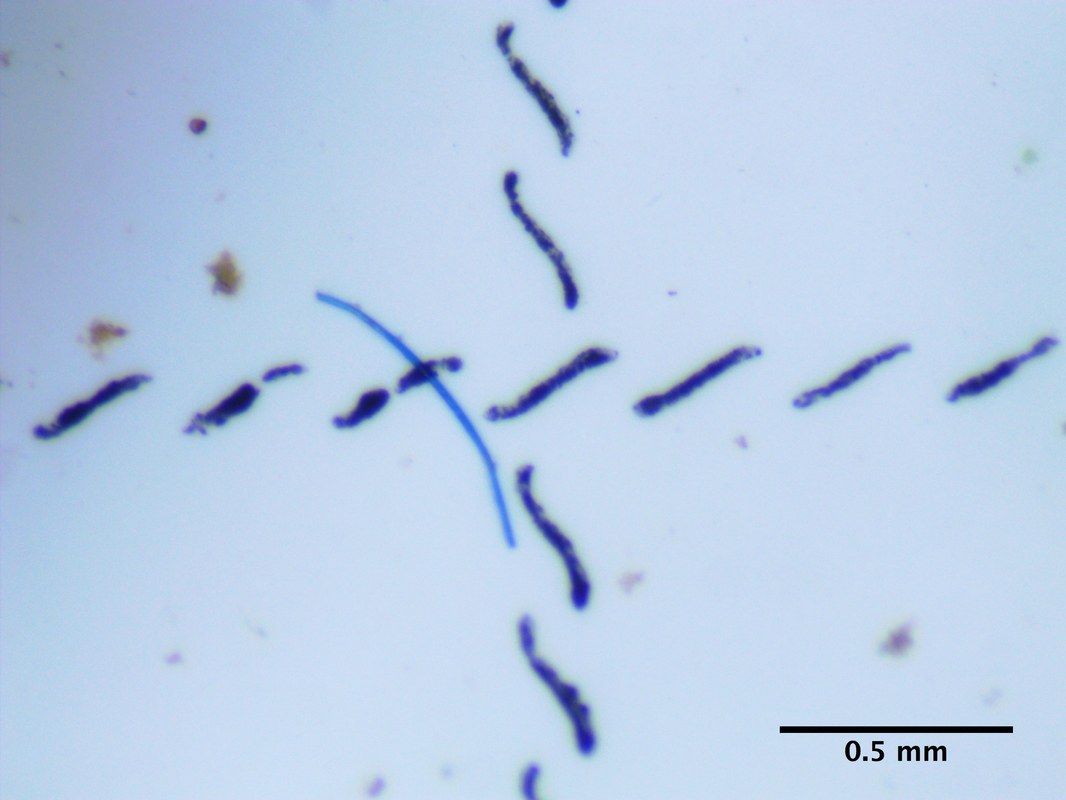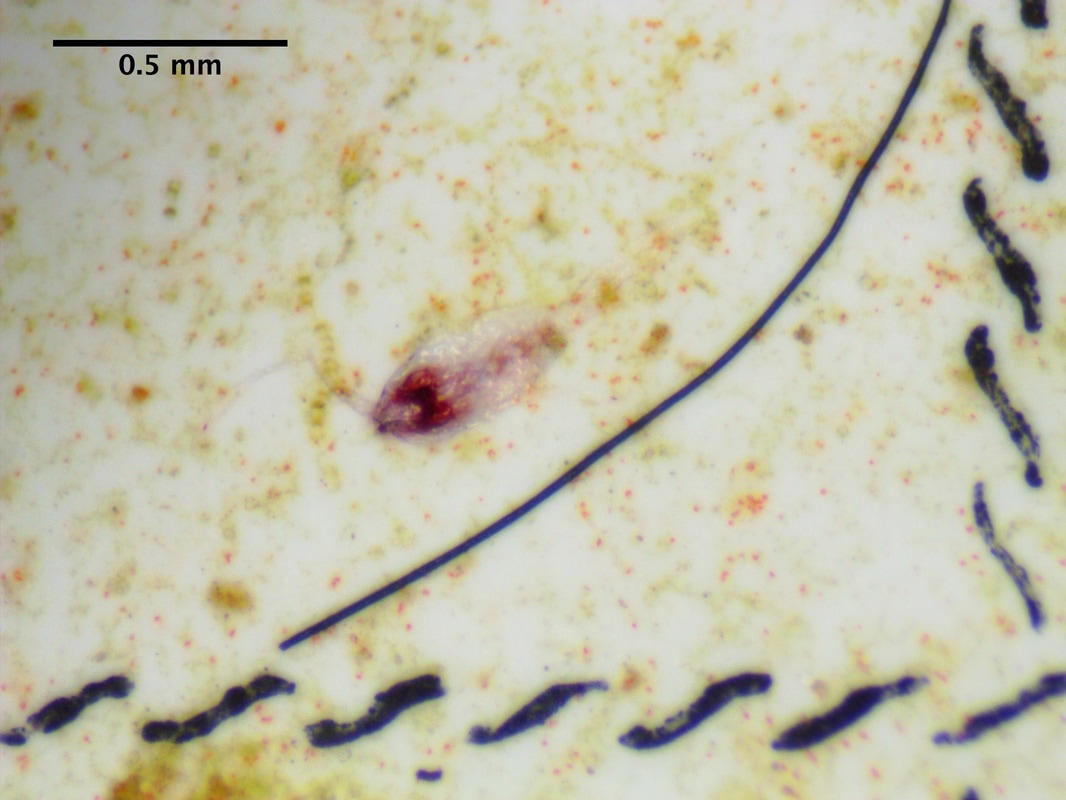Thank you for collecting water samples for the Adventure Scientists’ Global Microplastics Initiative. Your efforts are helping us understand the distribution and concentration of microplastics in the world’s waters, while also building the one of the largest microplastics dataset ever. Principal Investigator Abby Barrows has processed your microplastics samples, and we’re excited to share the results of your work!
First, let us briefly explain the process your samples go through in the lab. Once Abby receives your sample, she vacuum pumps each sample over a filter. After the filter has dried, Abby uses a microscope at 45x magnification to look for pieces of microplastic that are less than 5 millimeters. Moving along the grid lines, the filter is systematically counted, with each plastic piece categorized based on shape (round, microfiber, other) and color (blue, red, black, transparent/white, other). The final count for the sample is divided by the sample volume. This calculation helps to standardize the results, as incoming water samples are often not exactly one liter of water.
To date, 1786 of 2404 samples analyzed (74%) contained microplastics. 86% of marine samples contained plastic, while 48% of freshwater samples contained plastic. 24,806 pieces of microplastic have been counted. On average, we are finding about 9 plastic pieces per liter of water. You can check out the number of pieces per liter in each individual sample on the map on our microplastics page.
Note: In the results listed here, we report the total microplastic pieces found in all of your samples. However, for many of our calculations and for the online map, we report the total pieces per liter. As such, your microplastic total on the map may appear different from your total below.
Also, please let us know if your sample isn’t located in the correct place on the map, so that we can fix it for you.
Andrew Mann
Montana, Canada, & Utah
Andrew collected four samples during his ongoing expedition in various North American national parks, which didn’t contain any microplastic. Andrew graduated with a degree in forestry from Northern Arizona University, where he worked on several research projects, including beetle surveys in Peru and Costa Rica, and research on the pandora moth on the North Rim of the Grand Canyon. Since graduating, Andrew has worked as a field biologist for several public agencies. He enjoys nature photography, traveling, reading, and science.
Andrea Noziglia
California
Andrea collected two samples, which didn’t contain any microplastics. Andrea learned microplastics techniques when she worked as a microplastics monitoring intern with Abby Barrows at the Marine and Environmental Research Institute.
|
Cenote
Geraldine Solignac Mexico Geraldine collected six samples during her diving expeditions near Riviera Maya, which contained six blue microfibers, one clear microfiber, two black microfibers, and two red microfibers. Geraldine has a Ph.D. in Atmospheric Sciences and is a deep sea cave diver. |
Eryka Fiedler
Wisconsin
Eryka collected two samples, which contained one blue microfiber and two black microfibers. Eryka collected samples along the shores of Lake Michigan, Green Bay and a few smaller lakes. She is based in California where she teaches art and special education, and enjoys painting.
Dr. Merel Dalebout
West Indian Ocean
Dr. Merel Dalebout has a PhD in Ecology and Evolution (specializing in rare whales) and, among other things, works as expedition staff for several adventure cruise companies. Merel collected samples from the West Indian Ocean while working as the snorkel master and marine biologist for the cruise company, Noble Caledonia. Her trip started in Sri Lanka, took her down through the archipelago of the Maldives, continued on through the Seychelles, down the northeast coast of Madagascar, and ultimately ended in Mauritius. These “expedition cruise’ trips provide an excellent platform of opportunity to take samples for this microplastics project. Merel collected eight samples, which contained one blue microfiber.
Dr. Manuel Torres, Mike Maurice, Paul Staubus, and Robert Frye
California, Oregon, and Washington Coasts
Dr. Torres, Mike, Paul, and Robert collected six samples, which contained 10 pieces of microplastic: four blue fibers, two clear fibers, three black fibers, and one black and clear fiber. The crew collected samples during an expedition from California to the Puget Sound. Dr. Manuel Torres is a Geneticist and Evolutionary Biologist, and conducted a census of ocean plastic and marine wildlife during the expedition. Mike is a professional boat captain, Paul is a boating enthusiast and retired entrepreneur, and Robert worked as the expedition intern.
Lauren Dey
Michigan
Lauren and Caroline collected 11 samples, which didn’t contain any microplastic. Lauren is a Water Quality Technician and Jon is an Environmental Specialist.
Noa Bruhis
Idaho
Noa collected two samples, which didn’t contain any microplastics. Noa is a former whitewater raft guide and currently works as an engineer developing research-grade environmental instrumentation.
Abigail Barrows
South America
Abby is the principal investigator for Adventure Scientists’ Microplastics Initiative. She served as the guest scientist on an expedition to the Southern Oceans with Quixote Expeditions. Abby collected nine samples, which contained 31 pieces of microplastic: nine blue microfibers, five red microfibers, four clear microfibers, eight black microfibers, four purple microfibers, and one black fragment.
Rachel Fixsen and Patrick Johnson
Maryland
Rachel and Patrick collected one sample, which didn’t contain any microplastic.
Karl Heinmiller
South Carolina
Karl collected three samples, which contained one black microfiber and one clear fragment. Karl is a runner, artist, bird watcher, tea drinker, and techie.
Cameron Say
Australia
Cameron collected three marine samples, which didn’t contain any microplastic. He also collected two freshwater samples, which contained three blue microfibers, three clear microfibers, one black microfiber, and one purple microfiber. Cameron is currently studying Zoology at Deakin University.
Though we’re finding an average of 9 pieces per liter for the project overall, there is much more microplastic in marine samples than freshwater samples. The concentration of microplastic in marine samples is over 12 pieces per liter. This is much greater than the concentration in freshwater samples, which is about 1 piece per liter.
Another interesting trend we’re seeing is 90% of the microplastic we’ve counted is fibrous: the pieces are thread-like or line shaped. Finding a majority of these fibers in samples could suggest that microfibers are the primary microplastic input into waterways.
Thanks so much, again, for your dedication to this program and our shared waterways!



